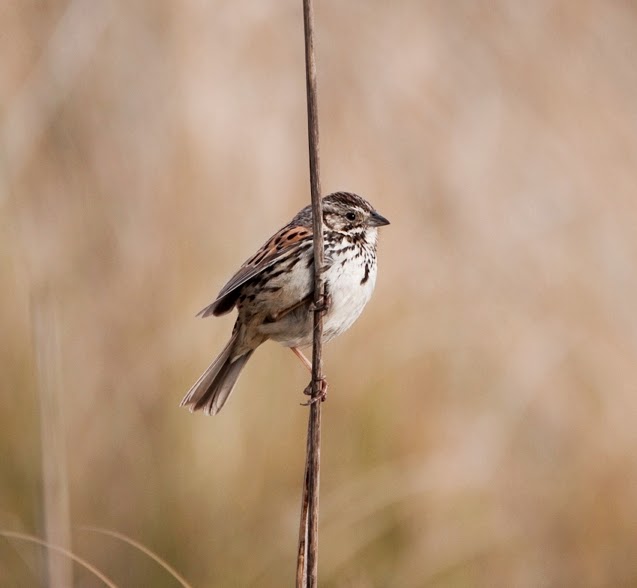 |
| Photo by Miguel Manzo (NaturaLista) |
Common name:
Sierra Madre sparrow (en); escrevedeira-serrana (pt); bruant des sierras (fr); sabanero serrano (es); sierraammer (de)
Taxonomy:
Order Passeriformes
Family Emberizidae
Range:
This species is endemic to central Mexico, where it only occurs in two disjunct areas, one in Distrito federal, near Mexico City, and another in southern Durango.
Size:
These birds are 14-15 cm long and weigh 16-19 g.
Habitat:
The Sierra Madre sparrow is found in high-altitude grasslands, scrublands and pastures, favouring areas dominated by Muhlenbergia macroura, M. affinis, Festuca amplissima and Stipa ichu which are subject to agriculture and cattle activities. They occur at altitudes of 2.300-3.050 m.
Diet:
They feed on on moths, caterpillars, flying ants, earthworms, beetles, spiders, grass seeds, and sown oat seeds.
Breeding:
These birds breed in June-September. The female builds the nest, a cup made of coarse grasses and forbs, lined with fine grasses, rootlets and hairs, and placed on or near the ground, among grass clumps. There she lays 2-4 pale greenish-blue eggs with blackish spots and flecks, which she incubates alone for 15-16 days. The chicks are fed by both parents and fledge 9-12 days after hatching, but remain near the nest for another 2 weeks.
Conservation:
IUCN status – EN (Endangered)
This species has a very small and fragmented breeding range, and the global population is estimated at 2.500-10.000 individuals. Although the global population trend as not been accurately estimated, suitable habitat within their range as possibly declined by nearly 50% over the last decade, suggesting the Sierra Madre sparrow is declining rapidly. Habitat loss is mainly caused by widespread burning to promote new growth of grazing pasture for sheep and cattle, but conversion for agriculture and urban encroachment are also problematic. There is also a high level of nest failure owing to heavy predation which may be exacerbated by habitat fragmentation. Since 2008, a conservation project has endeavoured to preserve and restore the species habitat with the involvement of landowners and managers.







